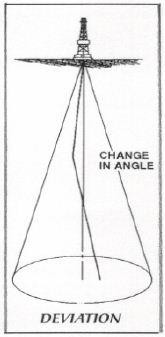نمایش نتیجه 1 تا 10 از 36 نتیجه یافت شده برای RTU:
n: Refers to eyeholes formed by mud desander in drilling operation.
the unobstructed opening size (diameter, length and width, or other shape factor).
in a horizontal plane, it is the angle (measured clockwise) of well path departure usually from true or magnetic north. It may also be expressed as the compass direction of the path of the well bore as measured by a borehole survey. (Note: check the speci
obstructing an aperture or opening by particles or debris.
n pl: the quantity of butane extracted in a precessing plant for wich lease settlement is included in the settlement made for natural gasoline by virtue of the gasoline settlements being used on a higher vapour pressure natural gasoline actually extracted. Sometimes called free butane or excess butanes.
n: (CAODC) a trade association that represents virtually 100% of the rotary drilling contractors and the majority of well service rig operators in western Canada. The relations, and other matters of interest to members. Address: 540 5th Avenue SW, Suite 800;Calgary, Alberta, Canada T2P OM2;(403) 264-4311;fax (403) 263-3796.
n: a drilling fluid made up mainly of chemical salts, such as sodium chloride, calcium chloride, or potassium chloride. Clear brine contains little or no clay or other solid material and is virtually transparent. It is often used when drilling into a producing formation because clear brine minimises formation damage. See completion fluid formation damage.
a brine without suspended solids.
n: see deviation.
n: One of the coordinates used to plot the path of the well on the horizontal plane (alone the x axis).
the distance from the kelly bushing horizontally to the end of the well.
n: The curve which can be adjusted by standard curve.
منحنی انحراف
graphs that show influence of a variable on the basic measurement;e.g., temperature, hole diameter, mud resistivity, bed thickness, adjacent bed resistivity, etc.
n: departure of the wellbore from the vertical, measured by the horizontal distance from the rotary table to the target. The amount of deviation is a function of the drift angle and hole depth. The term is sometimes used to indicate the angle from which a bit has deviated from the vertical during drilling. See drift angle.
n: The angle at which a wellbore diverges from vertical. Wells can deviate from vertical because of the dips in the beds being drilled through. Wells can also be deliberately deviated by the use of a whipstock or other steering mechanism. Wells are often dev





